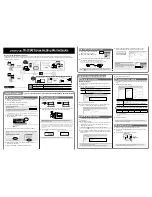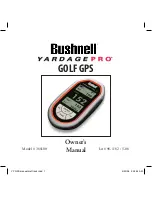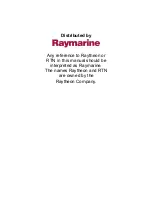
TM106601_(7/01) FMiv
USE OR DISCLOSURE OF DATA CONTAINED ON THIS PAGE IS SUBJECT TO THE
RESTRICTION ON THE TITLE PAGE OF THIS DOCUMENT
.
C
O M M A N D
S
Y S T E M S
D
I V I S I O N
INSTALLATION MANUAL
RDR-1600 WEATHER RADAR SYSTEM
AC 20-68B 8/8/80
(2) Installed airborne radar should not be operated while the aircraft is in a hangar or other
enclosure unless the radar transmitter is not operating, or the energy is directed toward an absorption
shield which dissipates the radio frequency energy. Otherwise, radiation within the enclosure can be
reflected throughout the area.
b. Body Damage. To prevent possible human body damage, the following precautions should be
taken:
(1) Personnel should never stand nearby and in front of a radar antenna which is
transmitting. When the antenna is not scanning, the danger increases.
(2) A recommended safe distance from operating airborne weather radars should be
established. A safe distance can be determined by using the equations in Appendix 1 or the graphs of
figures 1 and 2. This criterion is now accepted by many industrial organizations and is based on limiting
exposure of humans to an average power density not greater than 10 milliwatts per square centimeter.
(3) Personnel should be advised to avoid the end of an open waveguide unless the radar is
turned off.
(4) Personnel should be advised to avoid looking into a waveguide, or into the open end of a
coaxial connector or line connector to a radar transmitter output, as severe eye damage may result.
(5) Personnel should be advised that when high power radar transmitters are operated out of
their protective cases, X-rays may be emitted. Stray X-rays may emanate from the glass envelope type
pulser, oscillator, clipper, or rectifier tubes, as well as magnetrons.
c. Combustible Materials. To prevent possible fuel ignition, an installed airborne weather radar
should not be operated while an aircraft is being refueled or defueled.
M.C. BEARD
Director of Airworthiness







































